Disclaimer: This page contains affiliate links. If you choose to make a purchase after clicking a link, I may receive compensation at no additional cost to you. Thank you for your support.

Writing anything food-related isn’t easy. There are facts to double-check, measurements to consider, instructions to clarify, food testing to perform, and sometimes the constraints of hitting a particular word count.
It’s not difficult to see how errors can slip through the cracks. Even experienced authors and writers make mistakes. It sucks, it’s embarrassing, but hey, we are all human.
The hardest typo to see is one of your own (it has to do with high-level tasks and extracting meaning, so says this Wired piece). Easier said than done, I know. Hard and fast deadlines, the pressures of a manuscript deadline, and real-life prove distracting.
[No cookbook] is perfect. Even [Julia Child’s] iconic Mastering the Art of French Cooking had corrections well into the fifth printing.
Joan Nathan, Tablet, December 16, 2011.
But sometimes, especially in the case of recipes, the wrong move can kill someone. The following cookbook recalls and misprints below show how important it is to double-check the safety of ingredients and techniques.
What they don’t know can hurt you.
- Cookbook Issues, Misprints, and Errors
- Great Good Food by Julee Rosso
- Healthy and Organic Living Magazine Article by Antony Worrall Thompson
- How To Play With Your Food by Penn and Teller
- Hummingbird Bakery Cookbook by Tarek Malouf
- I'm Just Here for More Food by Alton Brown
- Matmagasinet Magazine
- Miette: Recipes from San Francisco's Most Charming Pastry Shop by Meg Ray
- The Pasta Bible by Lee Blaylock
- River Cafe Cookbook by Rose Gray and Ruth Rogers
- Cookbook Recalls and Cancellations
- How Do You Know Your Cookbook's Edition?
- Errata: Cookbook Fixes
- A Question of Intent
Cookbook Issues, Misprints, and Errors
Mistakes happen. Annoying, yes, but most cooks move on from the odd misprint. Sometimes, however, a cookbook or article is beyond overloaded with problems. When that happens, the food community is quick to react.
The following cookbooks or articles might have mistakes, but they didn’t entail a recall. Tread carefully. If your interest is piqued, borrow a copy before shelling out for one of your own (and don’t say I didn’t warn you).
Great Good Food by Julee Rosso
You’ve likely heard of The Silver Palette by Sheila Lukins and Julee Rosso. When it came to food, the food community at the time agreed that Sheila Lukins was the most knowledgeable, while Julee Rosso had a way with marketing.
After a feud split the two apart, Julee decided to produce a cookbook on her own in 1993: Great Good Food.
The funny thing is, Great Good Food was getting positive notices after its April publication. Then on June 9, The New York Times ran an extremely critical 1,900-word article by staff reporter Catherine Manegold that dismissed Great Good Food as ”well-meaning, but a mess.” Among the charges: that Rosso didn’t test her recipes sufficiently, that she’s a marketing whiz, not a chef, and — worst of all — that she copied a recipe from another cook (a charge Rosso has denied). One reviewer quoted in Manegold’s piece said it was one of the worst cookbooks he’d seen in years.
The story was accompanied by a tough review by Florence Fabricant that noted that ”too many [recipes] are flawed by errors and lapses that could cause consternation in the kitchen and chagrin at the table.” Among them: a recipe for four that called for five pounds of tuna and a shrimp recipe using a quarter cup of sea salt. Times Living section editor Eric Asimov acknowledges that the newspaper would normally have killed such a negative review: ”But in this case, a very famous person made a lot of money on a cookbook, and a lot of people were saying it’s pretty useless.”
Rosso’s advance for her first solo book — $625,000 — was indeed enormous. But The New Basics and the two Silver Palate books, which she and Lukins cowrote in the 1980s, all had extraordinary records, selling more than 4.5 million copies combined. They made a Kraft Macaroni & Cheese generation yearn to create complicated, imaginative meals with the likes of sun-dried tomatoes, raspberry vinaigrette, and phyllo dough. Ironically, even these early books were objects of intense criticism from members of the squabbling, gossipy New York food community (or foodies, as they’re called).
Fraught with inconsistencies and errors, the low-fat focused cookbook led cooks in the wrong direction. Respected names like Mark Bittman, Florence Fabricant, and the insiders of the time expressed their disapproval and some shared their disbelief.
Julee said she and four assistants tested 1,500 recipes, keeping the top 800 for publication. Even Sheila wasn’t sure about such a feat, telling The New York Times: “You mean to tell me she’s saying she tested that many in 10 months?” she said. “Give me a break.”
At the same time, some menus use recipes that don’t yield the same quantities. The salmon on a bed of lentils is for four; the accompanying lentil recipe, for six. The midnight chocolate torte calls for a 16-inch springform pan, a size that does not exist.
Another recipe lists “unsweetened butter” (did Rosso mean unsalted?). And the ginger in a chicken recipe is never used. The directions for preparing lamb and green peppercorn pasta are so confusing they are impossible to follow. A Mango Chicken Salad is so strong on curry flavor we wouldn’t serve it.
A recipe for fresh tuna calls for five pounds of the fish — to serve four. (Four families, perhaps?) And pork is included in a recipe for Moorish kebabs in a section on the cooking of Morocco, a Muslim country — an unfortunate choice, Rosso acknowledges.
Ouch. But that hasn’t hurt sales of The Silver Palate. A 2017 Washington Post article shared: “The first printing of “The Silver Palate Cookbook” was 37,000 copies; that tally now stands at 2.7 million and includes the 25th anniversary edition.”
Whether the poor reviews were related to jealousy, genuine irritation at wonky recipes or something else entirely, errors in Julee’s first solo effort didn’t stop her release of multiple cookbooks in the years since, which die-hard SP fans were quick to gobble up.
Healthy and Organic Living Magazine Article by Antony Worrall Thompson
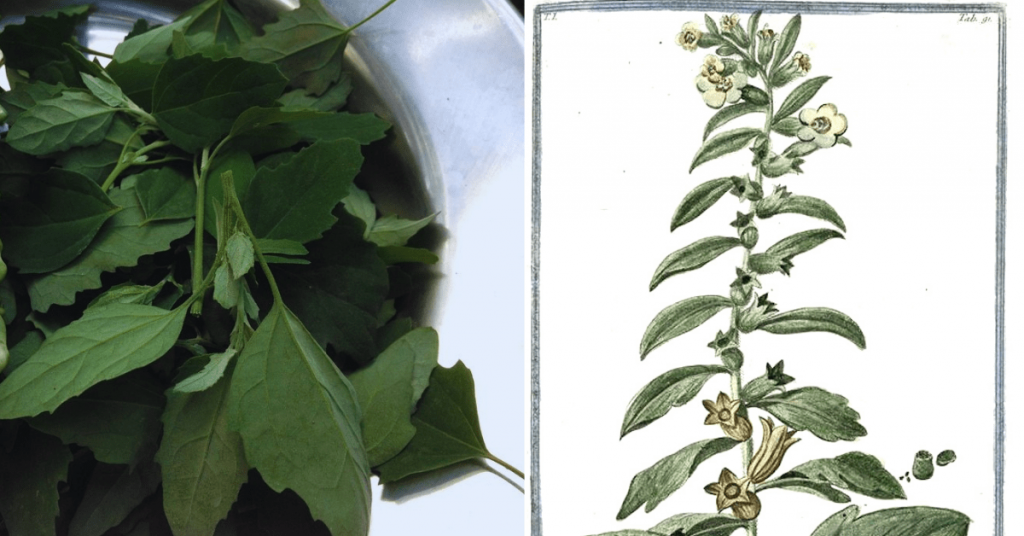
Right: “Henbane. Psychoactive properties include visual hallucinations and a sensation of flight. Hyoscyamus niger [as Hyoscyamus albus major] Hortus Romanus juxta Systema Tournefortianum, Bonelli, Giorgio, vol. 1 (1783-1816)” by Swallowtail Garden Seeds is licensed under CC BY 2.0.
The odd recipe error isn’t typically deadly. Well, except in the case of celebrity chef Antony Worrall Thompson in 2008. Antony accidentally recommended using the weed henbane, also known as stinking nightshade, to enliven salads in Healthy and Organic Living magazine. He meant to suggest the non-toxic “fat hen.”
Antony proclaimed the incident “a bit embarrassing,” says The Times UK. I admit I can be nitpicky on the meaning and weight of words, but I’m not sure “embarrassed” is the best way to describe this. Thompson is lucky no one died. But he isn’t alone.
How To Play With Your Food by Penn and Teller
Penn and Teller bring on the kitchen pranks. More than 100,000 copies were made for the first printing of the 1992 How To Play with Your Food book. Too bad it posed a danger to pranksters and their victims. How to Play with Your Food arrived with an impossible-to-open sugar packet because that’s part of the gag. Except…it could be opened.
You can cut the packet open with scissors, and, sources say, you can even rip it open if you hold it at a certain angle. If you do get it open, you’ll find that ain’t sugar in there. It’s apparently some sort of silica gel (a drying agent) and, as one publicist aptly put it, “it’s not fit for consumption.”
In other words, it’ll burn your tongue. Bookstores should’ve pulled all copies by now. If you already bought, you can exchange the whole book, or get a card for a new gag sugar pack.
Silica doesn’t break down, says Healthline, and becomes a choking hazard. If you do manage to ingest a good amount, you can cause an intestinal obstruction. It’s not exactly the kind of thing you want to add to your coffee or tea. How to Play with Your Food books were recalled, and a non-dangerous replacement shipped out with the next batch.
Hummingbird Bakery Cookbook by Tarek Malouf
Known for its delectable baked goods, the Hummingbird Bakery Cookbook in 2009 generated plenty of excitement. Bakery and food-loving folks couldn’t wait until they could try their hand at baking favorites from the bakery.
Excitement soon gave way to disappointment and, according to The Guardian, a bit of frustration too for home bakers. At least, for the home bakers who tried to bake the Lemon Loaf and the Lemon Poppy Seed Cake.
Off baking times and ingredient issues resulted in less than stellar results for baked cakes. Bakers hopped online in droves, wondering if their baking skills were to blame or if the recipes were at fault. It was the recipes. People complained on every online related outlet they could find until a list of updates helped appease the masses.
Although subsequent editions have been updated, anyone who purchased the first book can find the updated recipe in the correct proportions for those Hummingbird Bakery cake recipes as well as numerous baking tips. Clarification is also included on the Red Velvet Cupcakes and the Brooklyn Blackout Cake to better help bakers succeed.
I’m Just Here for More Food by Alton Brown

Sometimes, you have to wonder what someone was thinking (and I’m not just talking about the website design above). Take the case of Alton Brown’s I’m Just Here for More Food 2004 printing. Alton may be known for explaining why you use a particular ingredient or why things happen the way they do and sharing the science behind food-related reactions. But the errors in the first printing befuddled fans everywhere.
As you can see above (with that shade of lime green, it’s hard to miss), there are plenty of problems. Some are simple typos and word omissions that don’t take away from the text. It’s still (mostly) easy enough to follow. But then, there’s a recipe for pizza dough. Now, I admit I had to chuckle when I saw that food bloggers actually made the recipe using the bizarre ingredient accidently substituted for another.
While Alton Brown’s recipe contained the usual flour, yeast, and water, it also included 25 mg of children’s aspirin tablets (for the vitamin C). If you, like me, realized from the start that children’s aspirin, or any aspirin for that matter, does not include vitamins, you would be correct and a step ahead of the rest.
Somehow, somewhere in the publishing process, someone substituted “children’s aspirin” for the “vitamin C.” We should all be glad the recipe didn’t read “children’s Benadryl.”
Matmagasinet Magazine
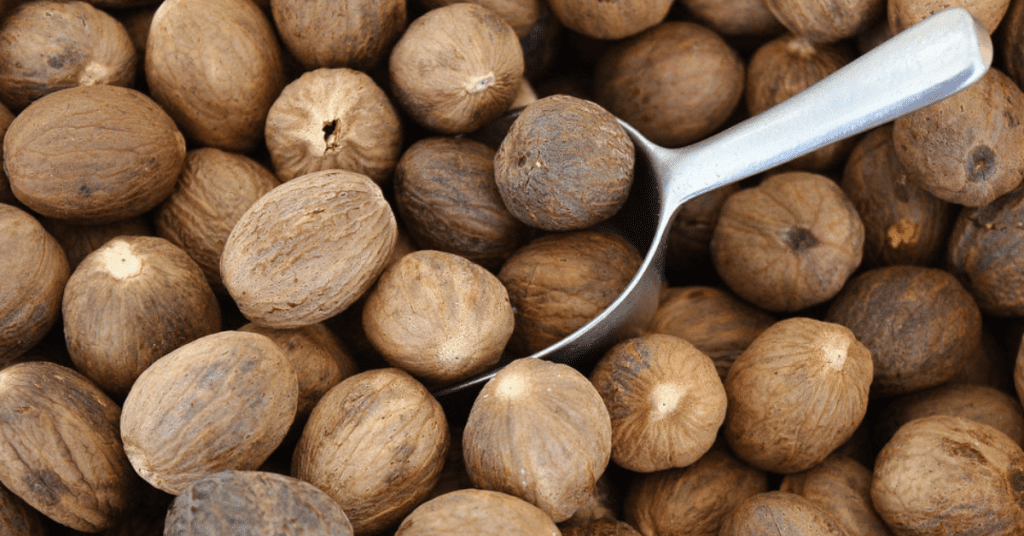
Swedish food magazine Matmagasinet had a bit of a typo in a 2008 issue. As Canada.com reported, ” Ten thousand copies of a food magazine were recalled in Sweden after a mistake in one of its recipes left four people poisoned, the magazine said Thursday.”
Rather than the two pinches of nutmeg listed in the actual recipe, the typo called for 20 nutmeg nuts.
When the magazine realized its mistake, it quickly shot off notifications to the 50,000 Matmagasinet subscribers and added a note to the inside of each retail magazine alerting purchases that “high doses of nutmeg can cause poisoning symptoms.”
What kind of symptoms? According to The Spruce Eats, “Ingestion of small amounts of nutmeg is harmless to the body, including the amounts called for in all standard recipes. However, the consumption of more than 1 teaspoon ground nutmeg at once can cause side effects like wild hallucinations, nausea, vomiting, dizziness, and irregular heartbeat within one to six hours after ingestion. Effects can last for several hours, and, when a large amount is used, can lead to organ failure.” Someone missed the memo.
The experienced bakers at Matmagasinet didn’t believe anyone would bake the cake because that’s not only a ton of nutmeg (and not easy or cheap to find) but too much nutmeg is bitter.
It wasn’t an obstacle for four people who became seriously ill from a nutmeg overload. The magazine immediately recalled the issue to prevent future illness.
Miette: Recipes from San Francisco’s Most Charming Pastry Shop by Meg Ray
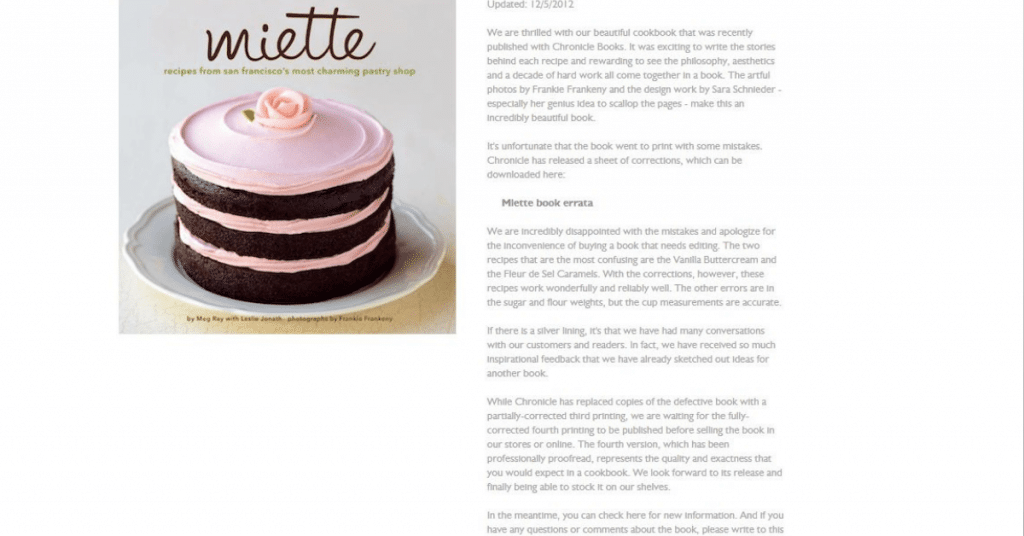
The fourth time’s the charm for Miette Bakery cookbook reprints. Or maybe not. The Miette Bakery cookbook received many positive reviews from bloggers and other food news sites. These folks must not have baked from it or got lucky by selecting one of the few recipes without significant issues.
But for everyone else who tried to bake from the Miette cookbook, the results would have been disappointing, if not infuriating.
The first copy of the cookbook generated enough online outrage that Amazon sent emails in August 2011 about releasing a corrected cookbook due in October and that folks could do what they wanted with the flawed version, including a link to an erratum (or list of corrections).
The errata contained errors. Released in November, the Miette cookbook didn’t include any inside-cover information to distinguish the corrected version from the error-filled version. Too bad the new printing was still as issue-filled as the first! The Miette website acknowledged the errors and said a fourth printing would be released.
Miette is a cookbook I included on my “must-have” list. After checking it out from the local library two years ago, I remember I oohed and aahed over it so much (and the adorable scalloped pages). I remember considering ordering the 6″ cake pans required to make these cute cakes. Knowing what I do now, if I decide to get the Miette cookbook, I’ll have to be careful to grab the correct version.
The Pasta Bible by Lee Blaylock
When spell checking runs amok, who knows what will happen? In the case of the Penguin Group Australia, it meant the reprint of 7,000 copies of The Pasta Bible (2010) by Lee Blaylock. “The exercise will cost Penguin $20,000, the head of publishing, Bob Sessions, said. At $3300 a letter, it’s a pricey typo,” as the Sydney Morning Herald reported.
As for the error, in a recipe for a sardine, prosciutto, and tagliatelle dish, rather than including “salt and freshly ground black pepper” in the ingredients list as it had on almost every recipe page (this is a book on pasta, after all), an autocorrect function made an unexpected and uncaught change.
The recipe typo read, “salt and freshly ground black people.” The Pasta Bible remained on the shelves of retail outlets because, as the publisher noted, recalls are hard to do. The typo has since been fixed in subsequent editions.
River Cafe Cookbook by Rose Gray and Ruth Rogers
Located on the Thames River in London, the River Café was (and is) known for its Italian food. In its early days, second-hand furniture and a lunchtime crowd catering to those in its locale: artists, designers, and architects. Word spread. People loved the café, and, as the café grew, so did its following. They published The River Café Cookbook.
In 1997, following the publication of the first River Café Cook Book, a minor scandal erupted. Its recipe for chocolate nemesis – a dark, flour-less cake which is baked until set in a bain marie – appeared not to work; many home cooks reported that their best efforts resulted only in a warm sauce which, as it spread slowly across their guests’ plates, resembled nothing so much as a freshly delivered cow pat.
A newspaper asked three professional chefs to have a go, but they flunked it, too. So, a reporter rang the restaurant. Was the recipe wrong? Or were the home cooks, and the chefs, incompetent? The word came down from one of the Café’s proprietors, the late Rose Gray. The recipe was right, she insisted. It was the cooks, amateur and professional, that were at fault. “It is a sort of challenging cake,” she said. “It’s a recipe you need to make a couple of times before you get it right.”
Chocolate Nemesis still appears on food blogs and websites with tweaks and suggestions like “bake for 90 minutes” or “add 1/2 cup sugar.” Make the trip to River Café, and you can taste the original. It still appears on the menu (and seems as popular as ever).
Cookbook Recalls and Cancellations
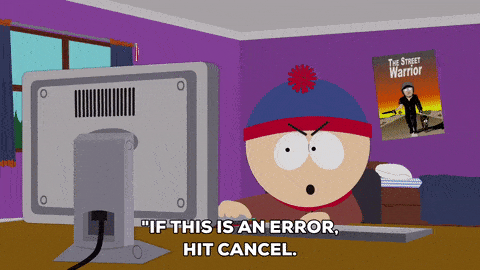
Then there are the cookbook errors. Although typos, grammar issues, missing ingredients, and other gobbledygook happen all too often, it isn’t the end of the world. However, in the rare case, like those below, accidents could hurt someone.
Recalling cookbooks is expensive and challenging, but sometimes it is the only valid option “just in case.”
Bubba Yum Yum: The Paleo Way
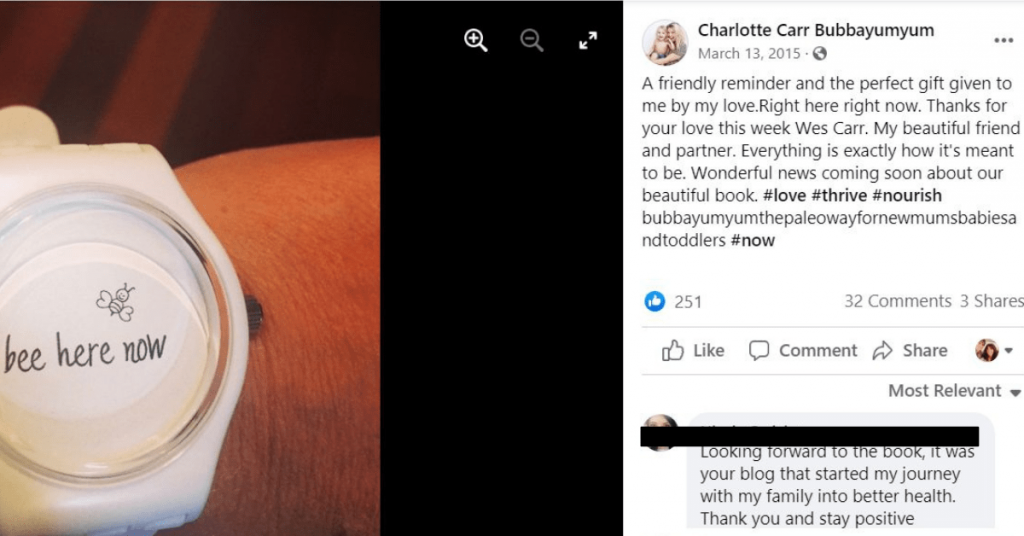
Whole food was THE TREND for awhile. Even I jumped on board the bandwagon, going thirty days without sugar, coffee, my favorite fruits, dairy items, or basically any of the things that make life worth living.
A 2015 cookbook slated for kids and babies caused a flurry of activity when health experts discovered a potentially fatal flaw in Bubba Yum Yum:
The Weekly Online has learned publishers Pan Macmillan have held back release of Bubba Yum Yum: The Paleo Way For New Mums, Babies and Toddlers – following intervention by a consortium of health organisations that expressed grave concerns over the book’s DIY baby milk formula, based on liver and bone broth.”
In my view, there’s a very real possibility that a baby may die if this book goes ahead,” Professor Heather Yeatman, president of the Public Health Association of Australia, told The Weekly online.
“Especially if [the DIY formula] was the only food a parent was feeding their infant, it’s a very real risk. And [I consider that] the baby’s growth and development could be impaired.”
. . .Experts warn it contains more than ten times the safe maximum daily intake of vitamin A for babies and inadequate levels of other nutrients.
While you would think that would be enough to keep Pete Keller and company from pushing forward, or at least having health professionals suggest improvements, the social media post screenshot I captured above showed otherwise.
Even with a retooling, the recipe was still downright dangerous to home cooks.
As News Australia reported, it still contained 4.5 times the maximum Vitamin A dose for a baby causing swelling of the fontanels and, according to the spokesperson for the Dieticians Association of Australia, “have failed spectacularly to meet any safe standards.” View more ridiculous recipes in this review on the News.com.au website.
Great Cakes by Carole Walters
Decorating cakes and other desserts with fresh flowers occurred long before Instagram and Facebook. For Great Cakes by Carole Walter, Ballantine, in 1991, flowers added an extra special touch to her carefully tested cakes. Unfortunately, the variety of flowers used in the book wasn’t fit for human consumption.
The problem in this case is that the book lists lilies of the valley among edible flowers as attractive cake decorations, but the flower is poisonous and can cause upset stomachs, irregular heartbeats and other circulatory problems when eaten, according to the publisher.
Cookbook Recall, Orlando Sentinel, March 19, 1992.
It’s obvious the work that goes into Carole Walter’s books. I own two other books she has written (at the time of this writing), which are impressive. Fortunately, after a little revising, this cookbook went back into the world.
The Happy Baby Cookbook by ACP Magazines
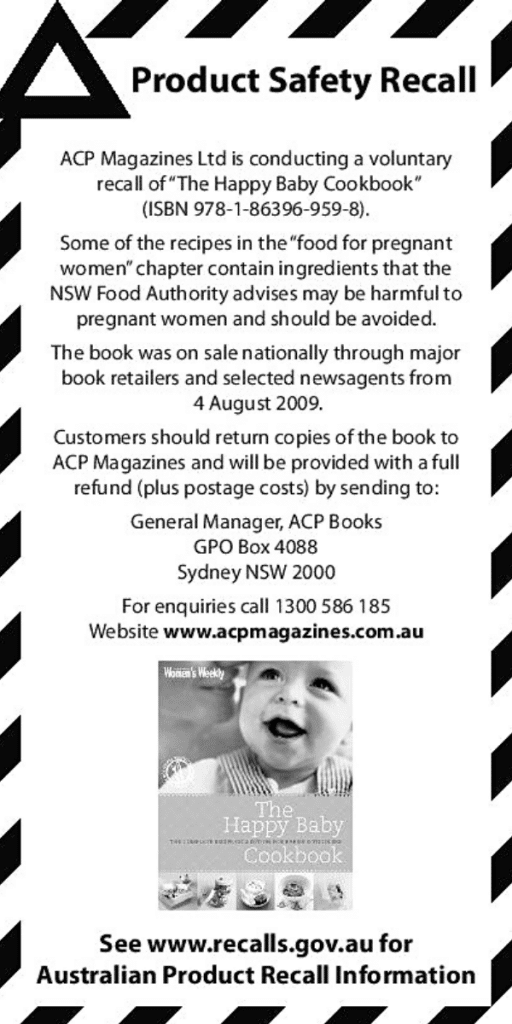
The Happy Baby Cookbook from ACP Magazines Ltd. received a bit of a blow from health officials after its August 4, 2009 release date. The problem? The inclusion of potentially harmful foods for pregnant women and their babies.
As explained by the New Zealand Food Safety Authority (NZFSA), the cookbook contains recipes for pregnant women that are made with ingredients that food safety officials believe could harm a woman or her unborn child if eaten during pregnancy.
Donald Campbell, NZFSA’s principal public health advisor, says some foods that we might normally think of as healthy and nutritious can be risky for pregnant women and their unborn babies.
“Because a woman’s immune system is less robust than usual when pregnant, it makes her more at risk of getting diseases carried by food, and her illnesses may be worse than it would normally have been,” Campbell says. “Also her baby may get an infection either before or during delivery.”
ACP Books recalled the books and ran an ad campaign to ensure greater reach in recovering sold copies. Customers were prompted to return the copy and receive a full refund as well as reimbursement for the price of shipping.
Sweet by Yotam Ottolenghi
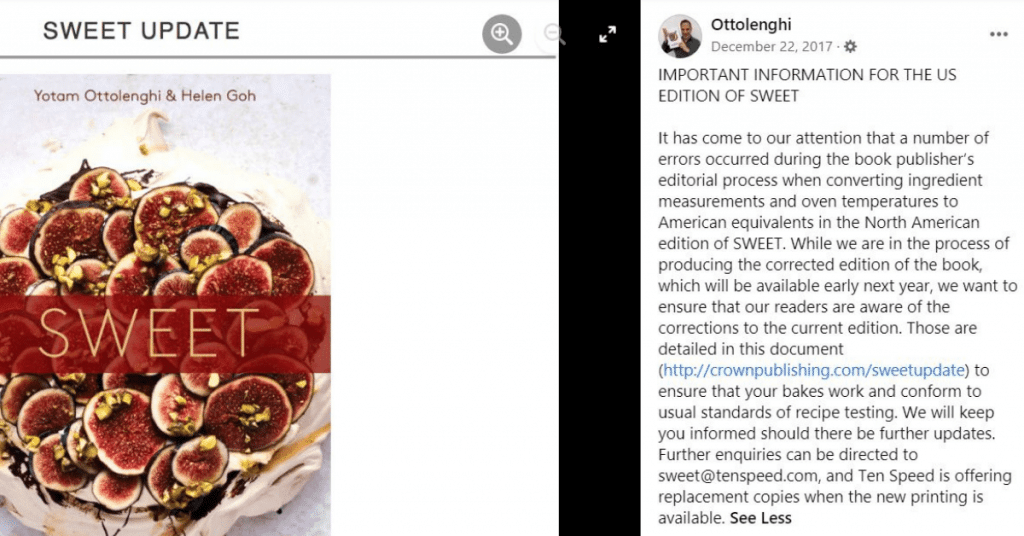
Thanks in part to some of the 12,000 members composing the Food52 baking club, recipes inside of Yotam Ottolenghi and Helen Goh’s cookbook, Sweet: caught a series of mistakes. Members had baking issues addressed by Goh, and provided recipe suggestions before the book’s rerelease.
Three days before Christmas, Ottolenghi’s Facebook page acknowledged there are a number of errors affecting 21 of the 115 recipes in the North American edition of the cookbook and linked to the corrections on the publisher’s website (crownpublishing.com/sweetupdate).
Seven corrections involve ingredient amounts or typos as well as a recipe for a Butternut, Honey and Almond Tin Cake that was mistakenly labelled nut-free.
Another 14 are temperature errors. Basically oven temperatures and baking times were converted incorrectly when the U.K.-published cookbook was revised for a North American audience.
Crown Publishing included a list of the recipes affected and the recommended changes. Folks who had already purchased the book were able to exchange it when the corrected North American version shipped.
It looked like the publisher tried working with any reader who had their copies signed. If all of that doesn’t sound like a massive headache, I don’t know what does.
Tales From a Forager’s Kitchen
Johnna Holmgren’s Instagram feed looked magical, so it’s no wonder it had accumulated 125,000 followers by 2018. Johnna’s first cookbook, Tales from a Forager’s Kitchen, featured a darling cover composed of various plant life.
According to BuzzFeed, Amazon readers were the first to notice the hidden danger inside. Johnna responded to BuzzFeed with the caveat that this book is for “adventurous eaters.”
The problem? The “two cups of in-season foraged mushrooms” required in one recipe (with Morels listed as a suggestion), another recipe utilizing raw elderberries, and another featuring foraged acorns. While the side effects of using raw elderberries appear to be up for debate, as some people are made ill from over-consumption, no one seems to know how much is too much or why some people are affected more than others.
So, too, goes it with the acorns, though that’s more an issue of taste, as the process initially described in the book would release bitter-tasting tannins. Too many and, yes, you’d get a stomachache; however, it probably wouldn’t taste so great.
But morels change things a bit. Raw morels, as BuzzFeed pointed out, cause nausea, vomiting, and abdominal pain. Then there are false morels which, just as it sounds, look like the real thing. False morels are also toxic, says AllRecipes.
Rodale Books and our author Johnna Holmgren take very seriously the concerns expressed by readers regarding the preparation and cooking of recipes with raw ingredients (mushrooms and elderberries) that are contained in her recently published TALES FROM A FORAGER’S KITCHEN.
In light of our review of these concerns, and because of our dedication to wellness, Rodale Books and Johnna Holmgren have decided to discontinue the publication and promotion of the book. We are encouraging retailers to return their stock, and we are offering a full refund to consumers who have purchased the book.
We are all committed to publishing books that offer reliable and comprehensive guidance about their subjects and we regret the inconvenience to our booksellers and readers. If there are any further questions about this title, please contact customerservice@penguinrandomhouse.com.
Johnna’s disclaimer advised people to track down experienced foraging services. She suggested folks be “1 million percent sure” of an item before consumption. Even so, the publisher pulled the book.
The Whole Pantry Cookbook (2018)
Not every book sold on Amazon begins with this caveat: Amazon Editorial Note: The author of this book has admitted that she fabricated her diagnosis of terminal brain cancer. Many an Instagrammer has dreams of hitting it big, gaining a following, and becoming a “social media influencer.” But not everyone makes up a cancer diagnosis to get there.
Australian Annabelle Natalie Gibson (October 8, 1991-), known to her followers as Belle Gibson, became social media famous after sharing how she received a terminal cancer diagnosis in 2009, with a life expectancy of four months. But here it was, May 2013. Her continued existence was thanks to alternative treatment and a whole food diet. An app and a cookbook followed.
But Belle Gibson was lying.
Belle’s following turned into an app in 2013. According to TechGuide, Belle was the first and only Australian developer chosen by apple to customize her Whole Pantry app for the Apple Watch in 2015. With 300,00 downloads behind it, the Whole Pantry app promised to send app proceeds to a charity but never did.
As Belle spoke of third and fourth cancer diagnoses, doubts began to spread.
The original book blurb: “Belle Gibson is an inspirational young mother who encourages us to nourish ourselves in a more natural and sustainable way. After being diagnosed with terminal brain cancer Belle found herself unsupported by conventional medicine. She began a journey of self-education to treat herself through nutrition. Her award-winning app, The Whole Pantry, is a phenomenal resource of recipes, wellness guides and personal support, and has inspired hundreds of thousands of people to change their diet and lifestyle.”
At the time of this writing, Belle possesses roughly $500,000 in unpaid fines and related fees, but the amount of damage she doled to actual cancer patients and their families will never be known.
Women’s Day Crockery Cuisine by Sylvia Vaughn Thompson
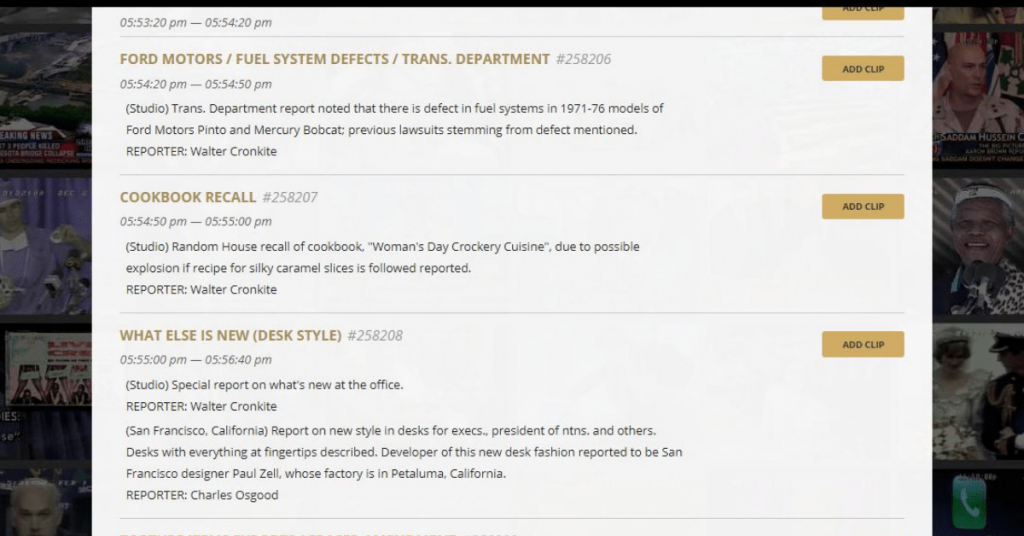
Slow cookers pop in and out of fashion. In 1978, Women’s Day Crockery Cuisine by Sylvia Vaughn Thompson (daughter of actress Gloria Stuart of Titanic and 1930s-1940s movie fame) released a cookbook sure to please.
Unless, of course, you followed the instructions for Silky Caramel Slices.
Random House yesterday recalled 3,000 unsold copies of a cookbook published last fall, and issued a warning to the 15,000 purchasers of the book, saying a recipe in it “could cause a serious explosion.”
The publisher said it had determined that there was a “fair possibility” of an explosion in a recipe for “silky caramel slices” in the book, “Woman’s Day Crockery Cuisine,” by Sylvia Vaughn Thompson, which was published last Nov. 7.
A Random House spokesman said the recipe instructed cooks to place an unopened can of condensed milk in a crockery pot. cover and cook for four hours over high heat. The recipe is missing at least one ingredient, water, and possibly some further instructions, the spokesman said.
“If the recipe is followed, the condensed milk can could explode and shatter the lid and liner of the crockery cooker,” the spokesman, William T. Loverd, said. He added that the publisher had not heard or any explosions and that the error had been discovered by a Random House employee, who tried the recipe and noticed that “it wasn’t working.”
You’ve likely heard of how some folks make homemade Dulce de leche in their slow cookers and maybe have done the same yourself. It’s the same idea, except for the whole addition of water that’s missing from the recipe. Any slow cooker recipe without enough liquid will always be a recipe for disaster.
How Do You Know Your Cookbook’s Edition?

Sometimes it helps to know a cookbook’s print edition to avoid potential mishaps. If you owned a copy of Miette, for example, you know you wouldn’t want to keep the first, second, or third version if you planned on baking from it. The same goes for the first copy of Bread by Jeffrey Hamelman.
How do you know what cookbook edition you own? How do you know if it’s a second printing or a first? As Invaluable reminds, “To publishers, an edition of a book refers to all copies printed from the same setting of type. A second edition may be released if substantial changes (such as adding a chapter) are made to the book after it’s first been released.”
Check the inside cover and flip to the copyright page. You’ll see a series of numbers below the ISBN and the manufacturing info. Right around that area, at the bottom of the page, lies a string of letters. Look at the right-most column for the printing version of your book.
A variation on that theme is the letter row. A is the first printing, B is the second…
Harper and Brothers, one of the many incarnations of the modern day HarperCollins publishing house, used a unique two letter code between 1912-1922 that indicated the month and year of publication. The first letter, A-M indicated the month, January-December. The second letter, M-W, indicated the year, 1912-1922.In some cases, a number is moved from the left side of the line to the end of the right side as that printing is exhausted. Another variation is printing number and year of publication. One side of the number line is the the printing number, the other side is the year of that printing. Numbers and years are removed as the book continues through its course of sales.
Those are the basics to discovering what cookbook edition you own. That way, you can either search for first edition cookbooks if you are interested in the future potential value of your book or later edition cookbooks so any errors have since been fixed in-text. The AbeBooks video above goes a bit in-depth if you need to know more.
Errata: Cookbook Fixes
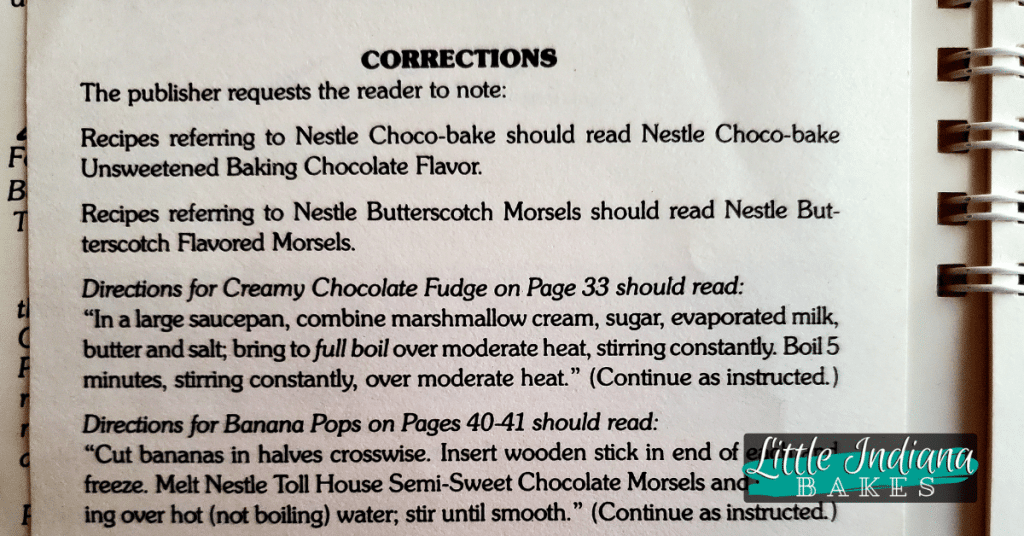
Unfortunately, there hasn’t been a single place for cookbook errata to live. Until now. I think it makes the most sense to include errata only on author and publisher pages, instead of per the book.
As I find authors and publishers with dedicated errata pages online, I’ll share them too. A couple of authors below share their errata on separate pages, so I chose one link.
- Authors
- Publishers
- Resources
- Chowhound: Cookbook of the Month includes cookbook errata in full detail
That list above looks sad. Wanna help me make it better? If you stumble onto an author or publisher’s corrections page, please feel free to share the links with me by email or in a comment below. We would all appreciate it.
A Question of Intent
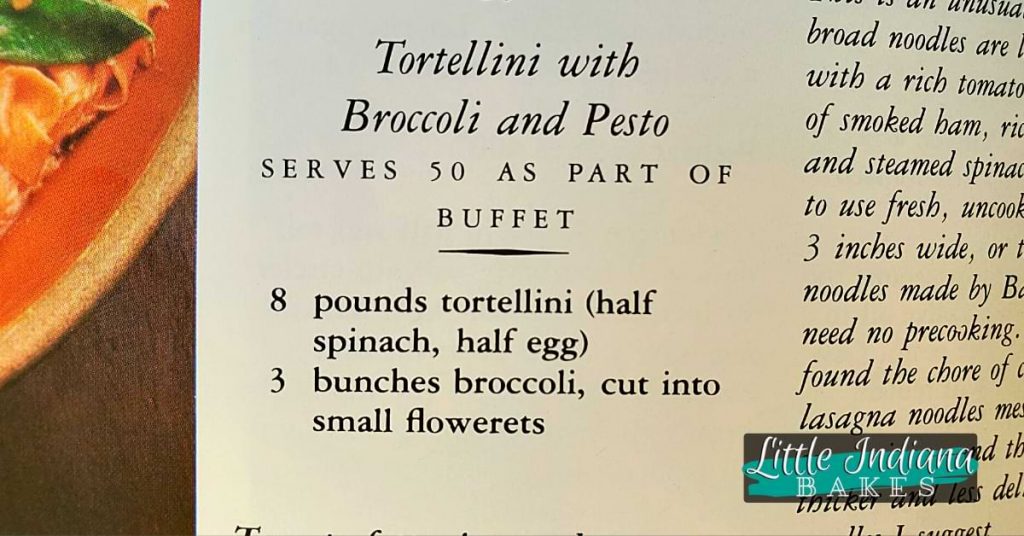
Martha Stewart’s first cookbook, Entertaining, contains an error. That’s not a good thing. Eight pounds of pasta, three bunches of broccoli, and only two cups of sauce. Dry, dry, dry.
Maida Heatter had issues with her recipe for Lemon Buttermilk Cake she addressed in a later version of Maida Heatter’s New Book of Great Desserts (1982), says the NYT. She jokingly blamed “demons.”
If perfectionists like Martha Stewart and Maida Heatter can still have a mess up, what’s that say for the rest of us?
We make mistakes. We fumble. We fail. We try again. Every writer (experienced or not) has made a mistake after submitting an article, sending a manuscript, or clicking “publish.” Maybe we should look at cookbook mistakes with a matter of intent. Look at the grace with which Maida Heatter, who meticulously tested and retested her recipes, handled an error.
Let’s be more like, Maida.
Maybe ask yourself questions. How many mistakes are there? Are there a couple of errors sprinkled throughout, or is the whole thing a hot mess? Is the cookbook a way to gain social recognition and fame and cash in on a new trend, or is it a legitimate error in a book that’s otherwise put together well?
Why not overlook a couple of errors because, you know, human or, perhaps, demons (see Maida’s joke above). If a cookbook is beyond workable, donate it, so it can hopefully one day land in the hands of someone who will appreciate the book in a way you can’t.

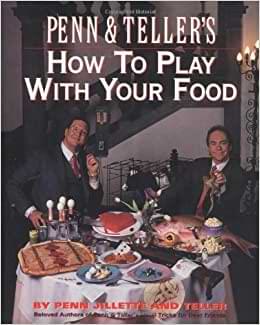
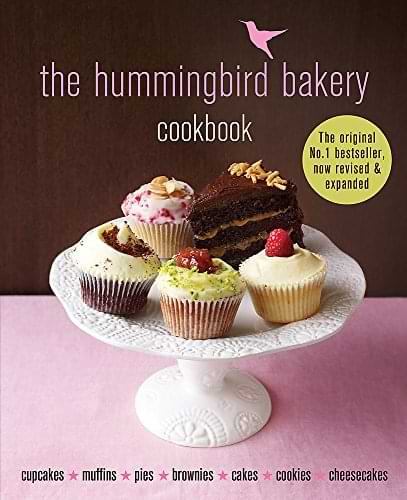

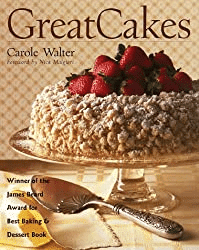
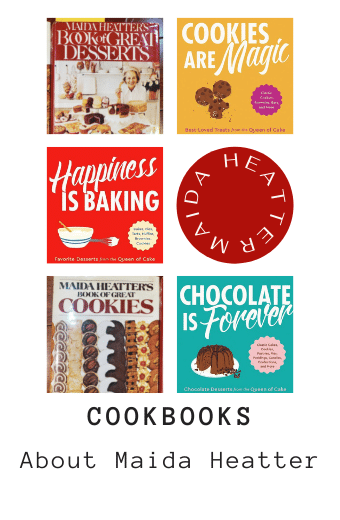
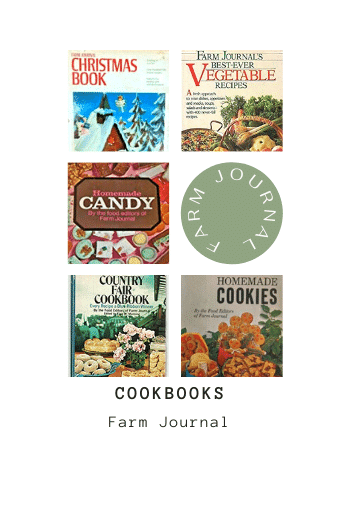
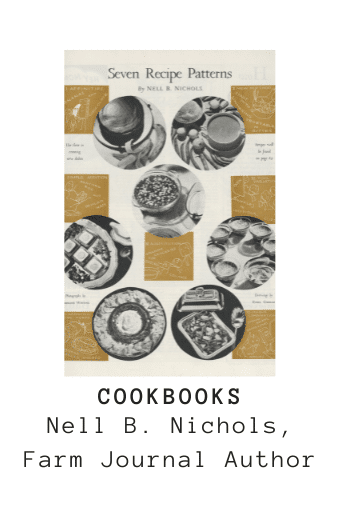
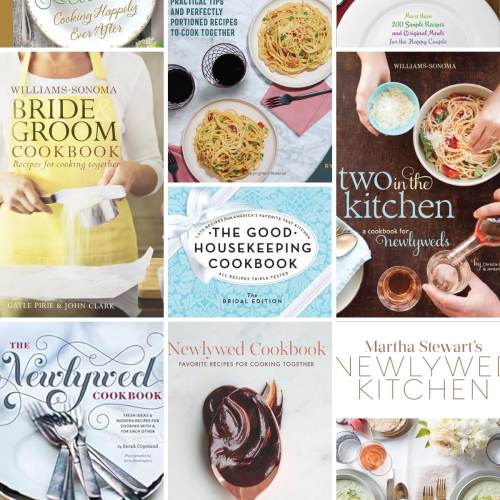
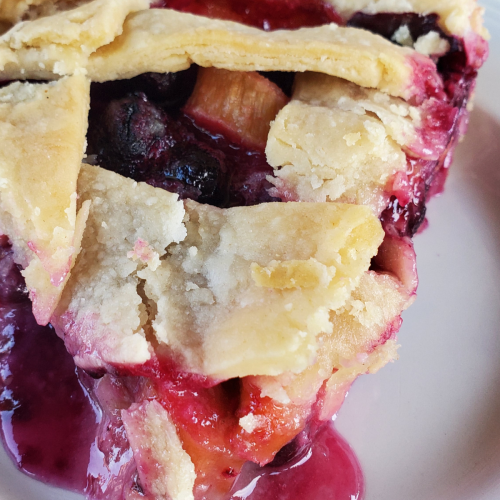
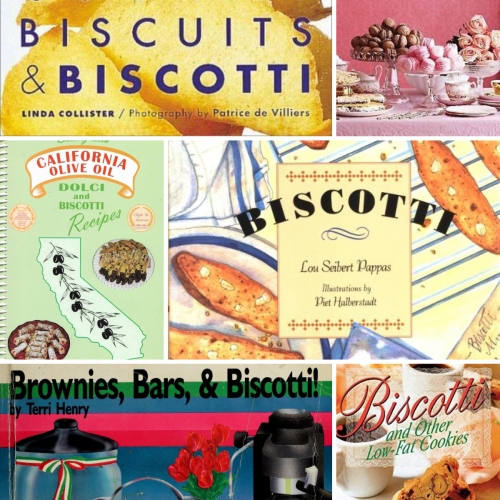
Leave a Reply